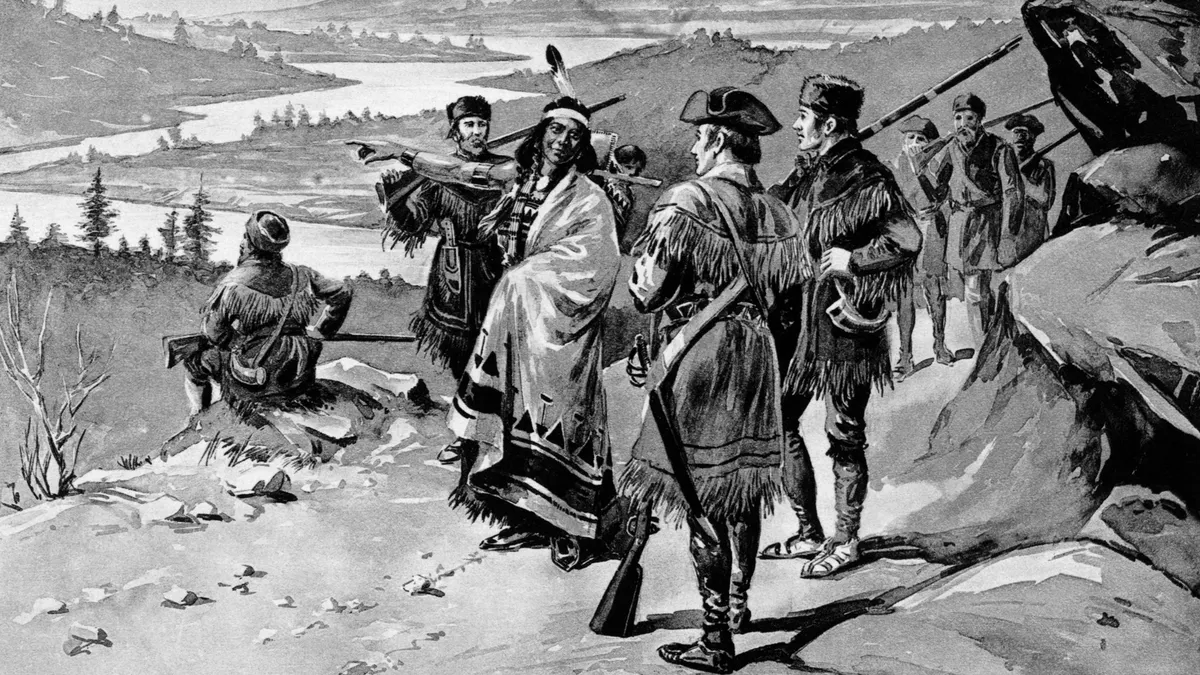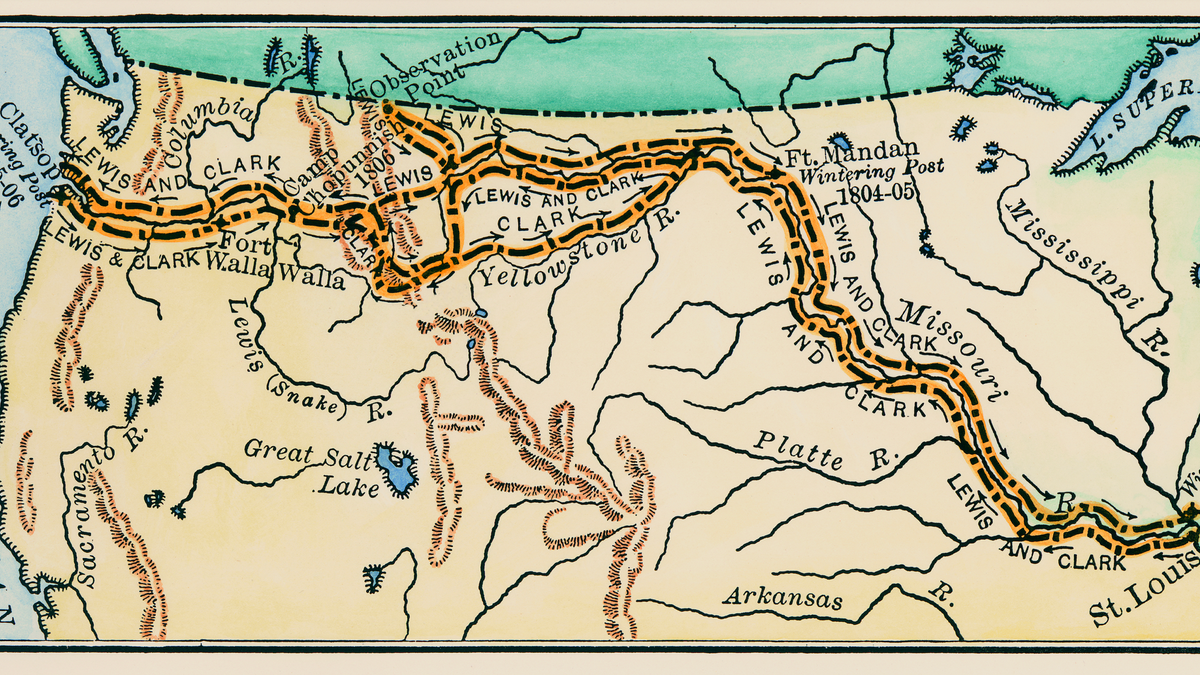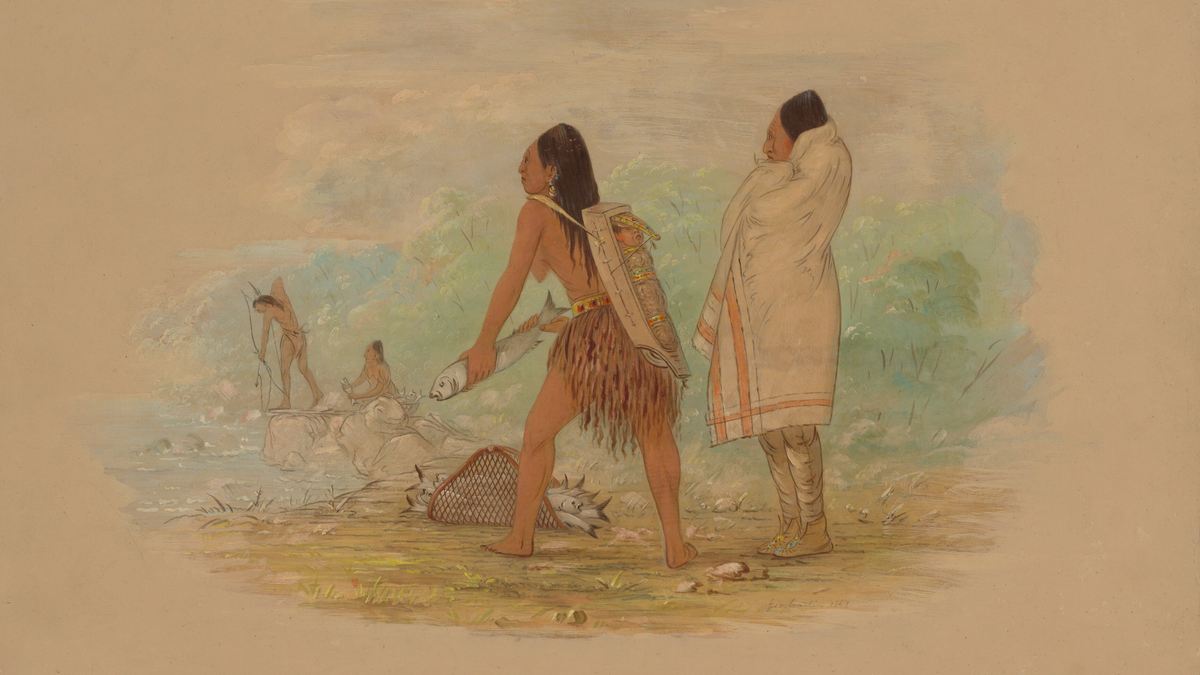U.S. Army Captain Meriwether Lewis, 2nd Lt. William Clark and their Corps of Discovery returned to St. Louis to a hero's welcome after their epic journey to the Pacific Ocean on this day in history, Sept. 23, 1806.
"We were met by all the village and received a hearty welcome from its inhabitants," wrote Clark as their expedition returned to the Gateway to the West.
"We Suffered the party to fire off their pieces as a salute to the town."
Their epic continental sojourn, easily covered by air travel today in mere hours, lasted 28 months and covered 8,000 miles of an undulating route largely following the Missouri and Columbia rivers.
ON THIS DAY IN HISTORY, SEPTEMBER 22, 1862, ABRAHAM LINCOLN PROCLAIMS SLAVES WILL SOON BE ‘FOREVER FREE’
"What happened to the Corps is a great story, brimming with energy and full of forward motion," enthused historian James P. Ronda in a 2003 retrospective in Smithsonian Magazine.
"In extraordinary settings, a remarkable cast of characters encountered adversity of epic proportions and struggled through one adventure after another."

The expedition included about three dozen members.
Among the multicultural band of explorers: Clark's slave, York, whose skin color shocked natives who had never seen a black person before; celebrated Shoshone native Sacagawea; and her French Canadian-Native American son Jean-Baptiste Charbonneau, born on the journey in present-day North Dakota in 1805.
Clark cared for the boy after Sacagawea died in 1812.
Seaman, Clark's Newfoundland dog, also made the journey.
UNIVERSITY OF VIRGINIA'S STUDENT NEWSPAPER CALLS TO REMOVE THOMAS JEFFERSON'S NAME FROM CAMPUS
The expedition took the Corps through what was then the forbidden North American wilderness, unexplored by Europeans, largely unmapped for posterity by humans and inhabited by flora, fauna and native tribes unknown to the outside world.
Among the curiosities they encountered and recorded to the amazement of European Americans were 178 plants, 122 animals — including grizzly bears — and the indigenous Clatsop people in what's now Oregon, one of many "Flathead" tribes of the Pacific Northwest.

"The most remarkable trait in their physiognomy," wrote Lewis, "is the peculiar flatness and width of forehead, which they artificially obtain by compressing the head between two boards while in a state of infancy and from which it never afterward perfectly recovers … From the top of the head to the extremity of the nose is one straight line."
The Corps was commissioned by President Thomas Jefferson while he was working to acquire the sprawling Louisiana Territory from France in 1803.
"Even before negotiations with France were finished, Jefferson asked Congress to finance an expedition to survey the lands of the so-called Louisiana Purchase and appointed Lewis as expedition commander," according to History.com.
THE AMERICAN LEGION TURNS 103: A BRIEF HISTORY OF THE ORGANIZATION FORMED TO AID WWI VETERANS
The Corps of Discovery departed on May 14, 1804, reached the Pacific on Nov. 7, 1805, wintered on the Columbia River near present-day Astoria, Oregon, and began the return journey to St. Louis on March 23, 1806.
Both Lewis and Clark kept detailed accounts of the journey.
They left for posterity a rich repository of insight into the natural landscape, the continent's native inhabitants and their own daily battles for survival.
Remarkably, all but one member of the expedition, Sgt. Charles Floyd, lived to complete the journey. He died on Aug. 20, 1804, perhaps of a ruptured appendix, upon what's now known as Floyd's Bluff on the Missouri River in Sioux City, Iowa.

"Lewis and Clark's journals record for us not only a story of astonishing personal courage but also a powerful parable of trust within the human community," writes editor Landon Y. Jones in his 2000 account of their diaries, "The Essential Lewis and Clark."
"On one level, Lewis is the more sophisticated storyteller," he wrote.
"Clark on the other hand is blunter, earthier and more to the point."
Among hundreds of other human insights in their records, the Corps of Discovery celebrated the young nation's independence on July 4, 1805, with their remaining stock of spirits, music and dancing in what's now Great Falls, Montana.
"The fiddle was played and they danced very merrily," wrote Lewis of his team.
"They continued their mirth with songs and festive jokes and were extremely merry until late at night."
"That evening the first Americans ever to enter Montana, the first to ever see the Yellowstone, the Milk, the Marias and the Great Falls, the first Americans ever to kill a grizzly, celebrated their nation's 29th birthday," wrote Stephen Ambrose in his 1996 history, "Undaunted Courage: Meriwether Lewis, Thomas Jefferson and the Opening of the American West."
TO SIGN UP FOR OUR LIFESTYLE NEWSLETTER
"It is with pleasure that I announce to you the safe arrival of myself and party," Lewis wrote to President Jefferson on the day of their return to St. Louis.
For more Lifestyle articles, visit www.foxnews.com/lifestyle
"In obedience to your orders we have penetrated the continent of North America to the Pacific Ocean, and sufficiently explored the interior of the country to affirm with confidence that we have discovered the most practicable rout which [does] exist across the continent by means of the navigable branches of the Missouri and Columbia Rivers."


